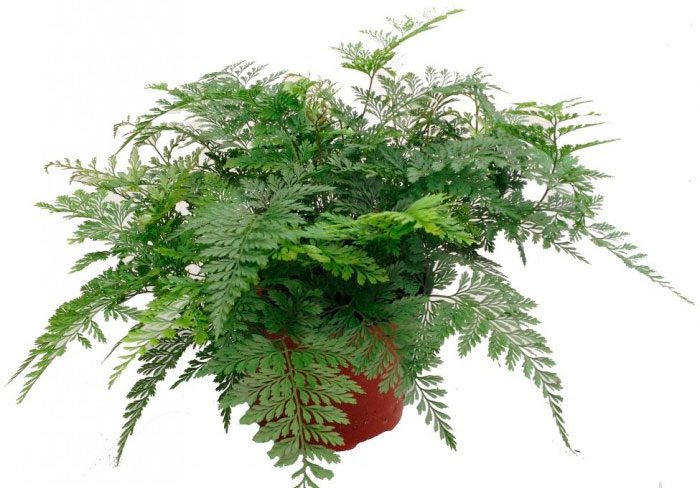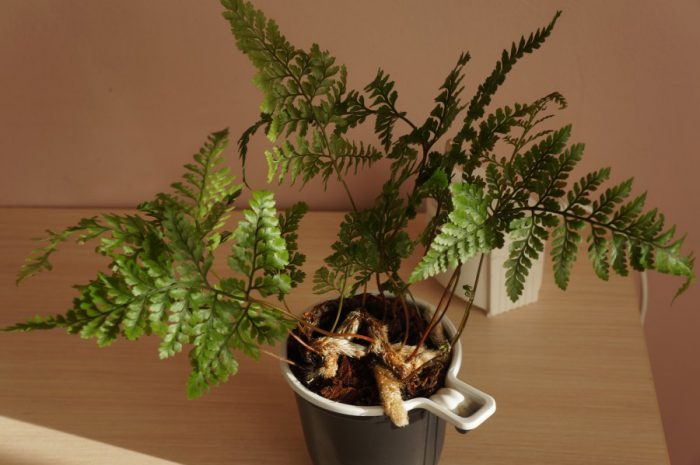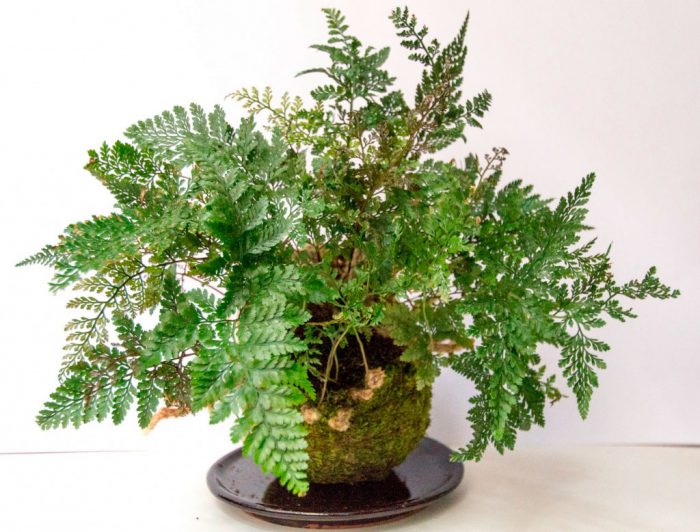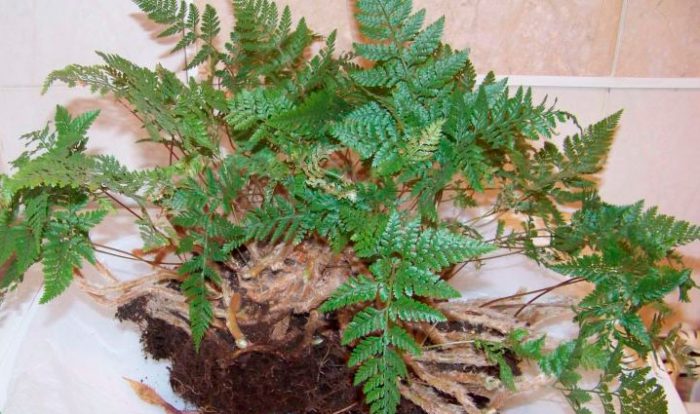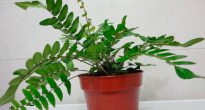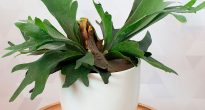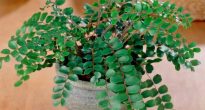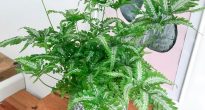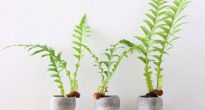An epiphytic fern like davallia (Davallia) is directly related to the Davalliaceae family, in which there are about 40 species. This fern is not very demanding to care for and does well in indoor conditions. And in the wild, it can be found in the tropical regions of China, Polynesia, and Japan.
Openwork young leaves, dissected into jagged oblong segments, are painted in a rich green color, and the old ones have a green-yellow tint. Young leaves (fronds) are formed throughout the growing season. In the last weeks of autumn, they stop growing and davallia begins a dormant period. After the daylight hours begin to lengthen, young leaves on the plant begin to appear again.
This fern differs from others in that it has thick creeping brown roots, on the surface of which there is a silvery fluff. They grow upward and soon begin to hang over the edge of the pot. The length of these roots can be 90 centimeters. Thanks to this feature, the plant is also called "rabbit feet" or "squirrel feet". These roots cannot be cut off.
In indoor conditions, such a fern is often grown in a hanging basket. Connies hang freely from the outside of the pot, and they are covered with dense foliage from above.
For growing at home, several types are used, for example: Fijian davallia (Davallia fejeensis), dissected davallia (Davallia dissecta), pentaphylla davallia (Davallia pentaphylla), Davallia trichomanoides. These species differ among themselves in the size of the bush, as well as in the shape of the segments.
Content
Home davallia care
Illumination
You need a lot of light, but you need shading from the direct rays of the sun. In summer, it is recommended to place the fern near the eastern window, which is illuminated by the sun only in the morning.
Temperature regime
In summer it grows well at a temperature of 18-22 degrees, in winter it should not drop less than 15 degrees. It must be protected from cold drafts. At a low air temperature in the room, all the leaves of the plant may fall off, but with the onset of spring, young foliage will appear.
Humidity
It is able to grow at low air humidity, but at high humidity, young foliage begins to actively grow in davalia. In the summertime, it is recommended to move the flower to a shaded balcony, veranda or garden. Has a positive attitude towards frequent spraying.Do not let the hanging roots dry out.
How to water
For irrigation, it is recommended to use slightly warm and always settled water. In the summer, you need to water abundantly, the ground should be moist all the time, and in the winter - moderately. When almost all foliage falls in the cold season, watering should be scarce. But make sure that the soil does not dry out.
Top dressing
The plant is fed from May to August 2 times a month. For this, fertilizers are used for indoor decorative deciduous plants (they are fed half-diluted). No top dressing is done in winter.
How to transplant
The transplant is carried out in the spring, if necessary, when the roots creep out of the container. A small pot should be chosen, because the davallia roots are at the soil surface.
Earth laugh
The soil is slightly acidic. In order to make a soil mixture yourself, you need to mix leaf, peat and turf soil, as well as sand and sphagnum in a ratio of 2: 2: 1: 1: 1. You can also mix leaf and peat soil and sand in equal proportions. It is recommended to add charcoal.
Reproduction methods
Can be propagated by dividing the rhizome. Wet ground is used for rooting. Each separated part should have twigs with leaves and roots. Young bushes are formed on the roots. The trimmed legs do not need to be deepened into the soil, but they are simply fixed on its surface.
Possible problems
- Lsprings become dark and dry up - low air humidity or high room temperature.
- The leaves turn yellow, curl and fall off, young foliage withers very quickly and falls off - low air temperature, cold water is used for irrigation, cold drafts.
- The leaves are colored pale gray, sluggish - too intense sunlight.
- In winter, the leaves turn yellow and dry. - the norm for this period, with the onset of spring new ones will appear.

